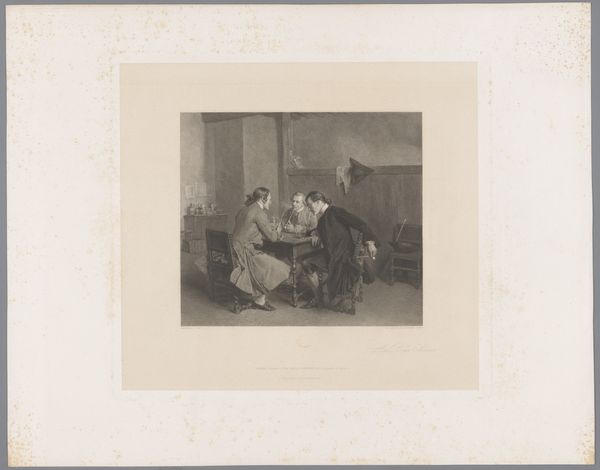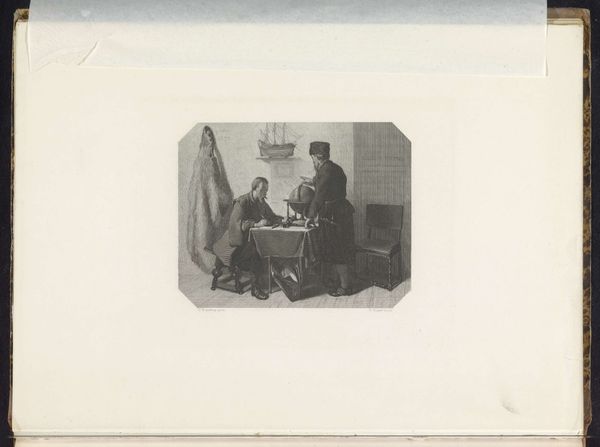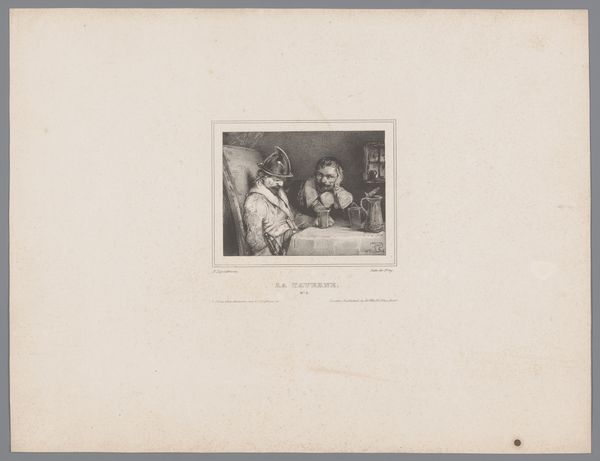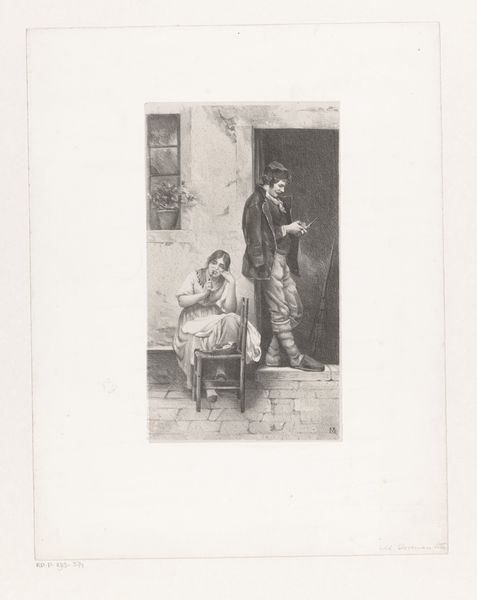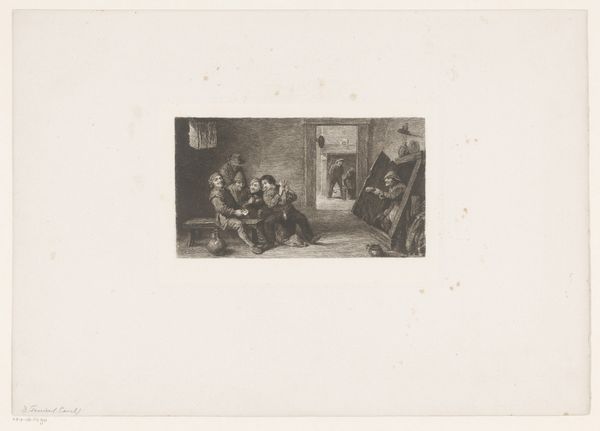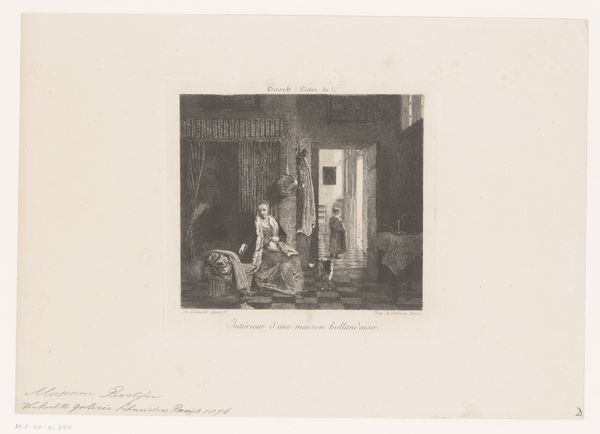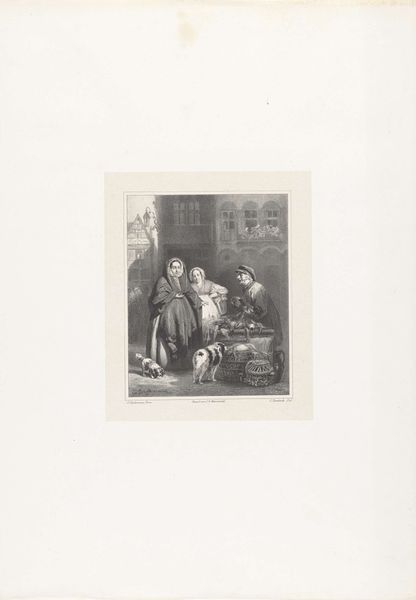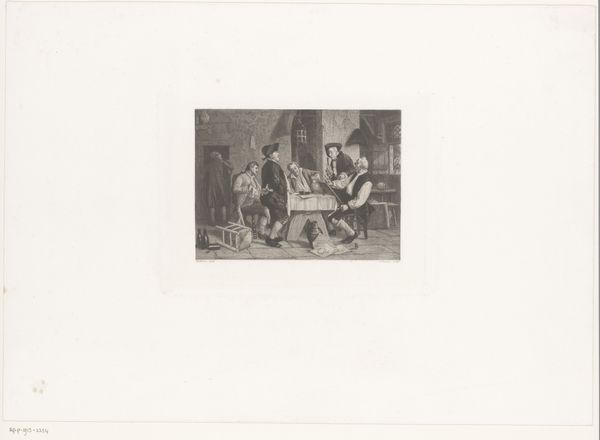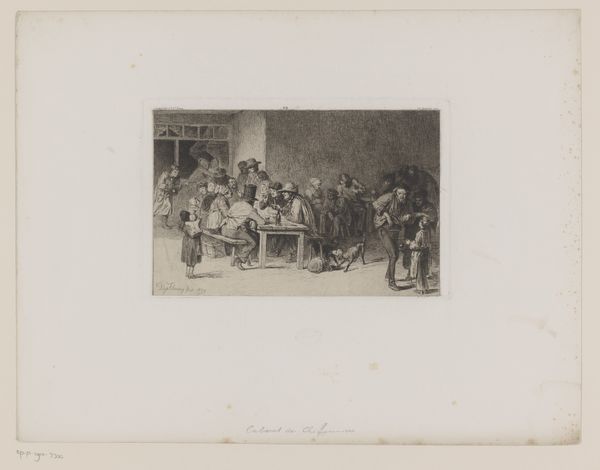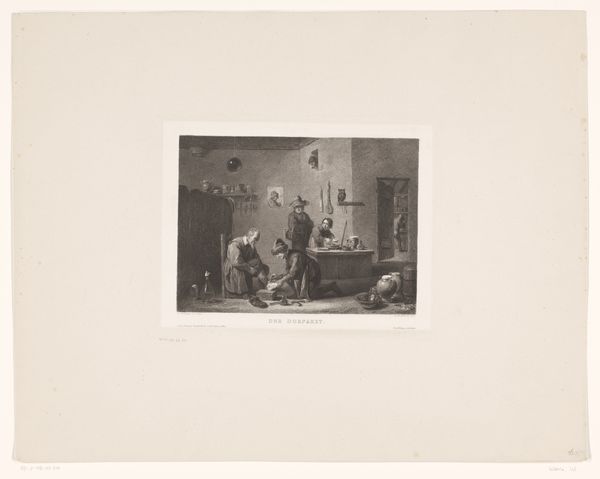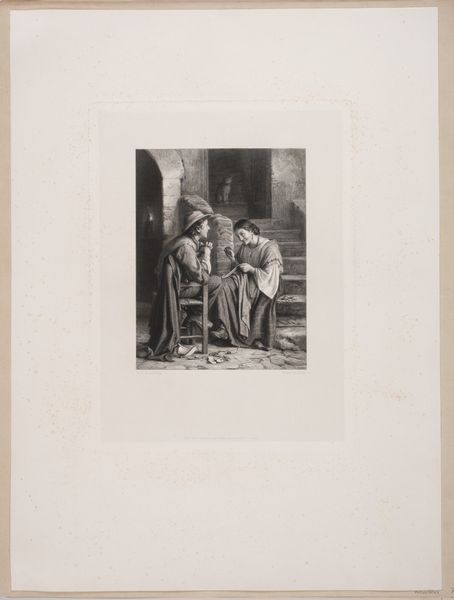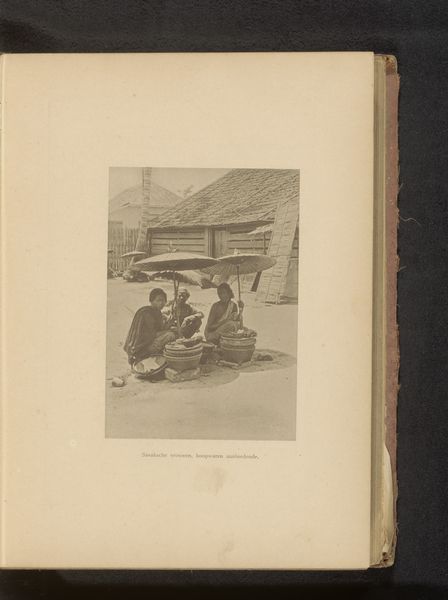
Dimensions: height 351 mm, width 450 mm
Copyright: Rijks Museum: Open Domain
Editor: So this print, "Eliza met kind en mannen in interieur" by Charles Rochussen, dating from 1850 to 1856, depicts a scene of what looks like a negotiation or confrontation. The use of engraving gives it such fine detail, but also makes me wonder about the socio-political context that inspired its production and circulation. What can you tell me about that? Curator: The engraving process itself is crucial. Think of the labour involved in translating an image into a reproducible format, democratizing the image for mass consumption. How do you see this process impacting the social narrative around slavery? Editor: That’s interesting. The print, by being reproducible, takes what was happening privately in a setting with enslaved persons and disseminates it in mass culture. The act of engraving creates both this permanent record and potentially alters it based on how it's produced or displayed, right? Curator: Exactly. This method creates an interaction between the producer and the user, reshaping its influence depending on how its presented, framed, received, and what purpose the consumer puts it toward. Consider too how the Romantic style influenced the reception, the emotions tied into production by Rochussen himself, a Dutchman. Editor: Right, I see that, and it really does come together in this piece. What kind of effect did this "genre scene" production have, though, overall? Curator: Well, the image participates in the commodification of a narrative, influencing, perpetuating, and even altering perceptions on enslaved peoples based on how its shared. Rochussen created a market for this artwork by circulating it as part of the abolition movement. Editor: That's fascinating. The choice of medium isn't just aesthetic, but deeply intertwined with how the message was spread and received, and about whose perspectives or material interests the final product represents. Curator: Precisely. The medium *is* the message, shaping the experience of seeing and understanding. Editor: I see now that focusing on process and medium allows us to delve deeper into art's interaction with society. Curator: Absolutely, considering the production unveils a complex web of intention, dissemination, and interpretation.
Comments
No comments
Be the first to comment and join the conversation on the ultimate creative platform.
